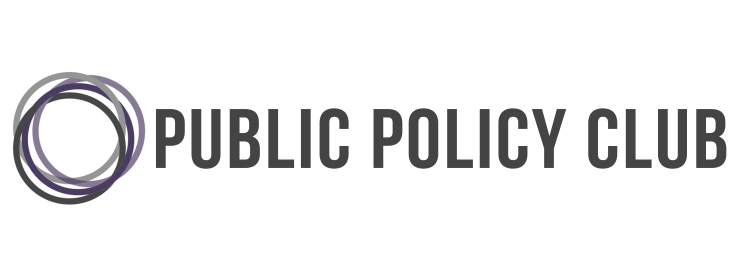By Yi Xin Heng
The state’s duty to intervene when situations go awry for children has been imprinted in the nation’s consciousness as early as 1890. However, the same recognition has not been extended to a group who experience abuse at a comparable rate – the elderly.
Apart from experiencing a brief spike in news coverage in June (when World Elder Awareness Day is commemorated), there is hardly any momentum to demand for an urgent response. Elder abuse is only mentioned four times in the Ministry of Health’s Healthy Ageing Strategy and an arguably toothless directive to “update the 2007 Family Violence Intervention Guidelines on elder abuse and neglect” was given to address the issue.
A policy response to elder abuse has not been directly articulated by the Labour Party, although a Joint Inquiry into Aged Care was made in collaboration with the Green Party and Grey Power (an advocacy group for citizens aged 50 and above) in 2017. The National Party is still tentatively crafting their aging policy and has encouragingly listed “elder abuse and neglect” as an issue of concern in their online survey. This issue has not made its way into New Zealand First’s coalition priorities either.

Recommendations made by the Joint Inquiry into Aged Care are worthy of consideration. There were calls for the establishment of an Aged Care Commissioner who will investigate allegations of elder abuse and complaints made against nursing homes. Currently, this portfolio is subsumed under the role of the Health and Disability Commissioner, who is undertaking the juggling act of advocating for better disability, mental health and addiction services. Equally pertinent was the proposal to standardise the quality of aged care; elderly abuse and neglect prevention services are currently contracted to a range of organisations across the country, such as Age Concern. Even if enacted however, our neighbour across the Tasman appears to be a step ahead of us.
The number of elderly in Australia is six times that of New Zealand which justifies a greater investment in aged care. However, the percentage of elderly in both countries is not dissimilar and both countries anticipate a swell in the ageing population to 20 – 23% in the next few decades.
| Australia | New Zealand | |
| No. of elderly | 3.7 million people, 15% | 607,032 in 2013, 14.3% |
| Increase in funding | $15 million in 2016; $22 million from AGD over 5 years from 2017-18 | Increase in national funding but redistributed across more areas |
| National Plan | National Plan to Respond to Abuse of Older Australians | None |
| Information centre | Elder Abuse Knowledge Hub | Some resources available on the Super Seniors website |
| National hotline | Established in 2019 | Established in 2017 |
| Front line services | Trialling services, including specialist elder abuse units, family counselling and mediation, and health-justice partnerships | Wider geographical distribution of elderly abuse and neglect prevention services |
| Commissioner | Human Rights Commission’s Age Discrimination Commissioner | Health and Disability Commissioner who has other portfolios |
| Royal Commission/ National Inquiry | Announced in 2018, investigates aged care sector | None announced |
| Research | First national study on prevalence of elder abuse to be conducted in 2019 | New Zealand Longitudinal Study of Ageing conducted in 2012 |
| Enduring Powers of Attorney | Aim to establish a National Register of Enduring Powers of Attorney | Status quo |
The Australian Government placed elder abuse on the political agenda as early as 2016, with an election commitment of $15 million to address elder abuse. PM Scott Morrison is unlikely to change the tune soon, as the Australian public are still reeling from the attempted suffocation of an elderly resident by a care worker in 2018. The Attorney-General’s Department has thrown their weight behind this issue, announcing $22 million worth of funding and a suite of measures a mere fourteen months after releasing a discussion paper on elder abuse.
Australian Law Reform Commission’s 2016 Discussion Paper on Elder Abuse toyed with some bold ideas on reforming the aged care sector. First, a screening process was proposed to ascertain the suitability of all employees working in the aged care sector – much like the safety check introduced by the Children’s Act in 2014 for the child protection workforce in New Zealand. Second, an adult safeguarding law was suggested, which would establish adult safeguarding agencies with the authority to open investigations when there are grounds to suspect that an adult might be in harm’s way. Both recommendations have not received any mention since then.
In the UK and the US, responding to elder abuse (or more broadly, adults at risk) is a statutory responsibility. The Care Act 2014 gave local authorities in the UK the power to safeguard adults whose wellbeing has been compromised by abuse and neglect. The Welsh Government has followed suit with the Social Services and Well-being (Wales) Act 2014, while Scotland has had the Adult Support and Protection (Scotland) Act as early as 2007 and has an ongoing campaign for harsher penalties for elder abuse. In the US, Adult Protective Services are provided by the state and local governments, while in Ireland, these services are located within the public health system.

There might be hesitation to implement an elder abuse law due to varying definitions of being “elderly”. As Moir, Blundell, Clare and Clare (2017) argue, victims in their 40s, 50s and 60s risk being overlooked if an arbitrary line is drawn at age 65. This can be easily reconciled by defining the target population as “adults at risk” with old age as but one risk factor for abuse.
The extent to which this issue is covered by existing laws is arguably limited. The unique nature of elder abuse demands a separate piece of legislation instead of a hodgepodge of protection from the Protection of Personal Property Rights Act 1988 (deals with enduring powers of attorney), Crimes Act 1961 (the carer has a legal duty to protect vulnerable adults from injury) and the Privacy Act 1993 (banks have a duty of confidentiality to customers, but can do little beyond asking the customer “Are you okay?”). As noted by the Ministry of Health in 2007, older persons are more likely to be in need of specialist services and assessments of cognitive capacity may need to be conducted. Additional resources are needed to ensure that the older person’s voice is heard in the decision making process; having diminished capacity does not justify exclusion.
New Zealanders should critically evaluate recommendations made by the Joint Inquiry into Aged Care and take a step further to consider the desirability of an adult protection law and adult protection services. International best practices in elder abuse and neglect prevention should be thoroughly evaluated, among which include mandatory or permissive reporting laws, statutory requirements for multi-agency cooperation and perpetrator inclusion in interventions. Elder abuse should no longer be left in the grey.
References:
Graph of estimated percentage of elderly in each age group from Ministry of Health: https://www.health.govt.nz/nz-health-statistics/health-statistics-and-data-sets/older-peoples-health-data-and-stats
Illustration of elderly being neglected from The New York Times: https://www.nytimes.com/2018/03/02/health/elderly-self-neglect-.html
The Public Policy Club is a non-partisan club at the University of Auckland that aims to encourage, educate and involve students from all backgrounds in the education and development of political knowledge. The views and opinions expressed in this article are those of the author and do not necessarily reflect those of PPC.




